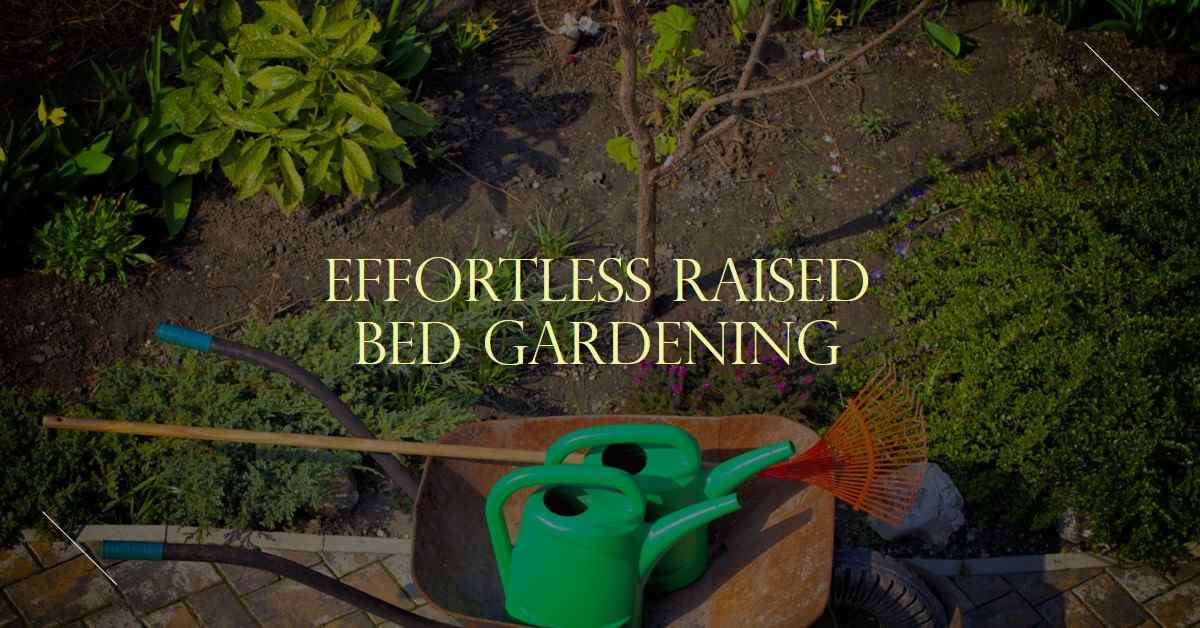Raised bed gardening is a popular method that offers numerous benefits for both experienced gardeners and beginners. One of its primary advantages is the ability to maximize limited space while reducing physical effort. In this article, we will explore the concept of raised bed gardening, the space-saving benefits it provides, how it reduces the gardener’s workload, and how to design your own raised bed garden. Additionally, we will delve into the environmental impact of raised bed gardening, focusing on water conservation and improving soil health. With raised bed gardening, you can create a productive and sustainable garden, even in a small space.
Understanding the Concept of Raised Bed Gardening
Raised bed gardening involves planting in beds that are elevated above ground level. These beds are usually constructed using wooden boards or bricks and are filled with a mix of soil and organic matter. The concept behind raised bed gardening is to create a controlled environment that optimizes plant growth and minimizes maintenance. Raised bed gardening has gained popularity among gardeners of all levels due to its numerous benefits and versatility.
One fascinating aspect of raised bed gardening is its adaptability to various environmental conditions. Whether you have limited space, poor soil quality, or physical limitations, raised bed gardening offers a solution. By creating a raised platform for your plants, you can overcome common gardening challenges and customize the growing conditions to suit a wide range of plant species. Learn more about the raised bed garden from Seed Sun Soil.
The Basics of Raised Bed Gardening
Before diving into the benefits of raised bed gardening, it is essential to understand the basic principles. Raised beds typically range in height from a few inches to a foot, allowing for improved drainage and aeration. This is particularly advantageous for plants that prefer well-drained soil. Additionally, the elevated nature of the bed allows gardeners to reach the plants without constantly bending or kneeling, reducing strain on the body. The increased depth of soil in raised beds also promotes stronger root development and better water retention, leading to healthier and more productive plants.
Key Components of a Raised Bed Garden
A successful raised bed garden requires a few essential elements. Firstly, the bed should be placed in an area that receives adequate sunlight for the types of plants you wish to grow. Secondly, selecting the right soil mix is crucial for providing the necessary nutrients and proper drainage. Choosing a well-balanced soil blend enriched with organic matter will create a fertile environment for your plants to thrive. Lastly, incorporating organic matter, such as compost or aged manure, can further enrich the soil and promote healthy plant growth. The addition of organic materials not only enhances soil structure but also encourages beneficial microbial activity, fostering a vibrant ecosystem beneath the surface.
The Space-Saving Benefits of Raised Bed Gardening
One of the remarkable benefits of raised bed gardening is its ability to make the most of limited space. Whether you have a small yard, a balcony, or even just a rooftop, raised beds enable you to create a productive garden in a confined area.
Maximizing Garden Space with Raised Beds
With raised beds, you can efficiently utilize every inch of available space. The square or rectangular shape of the beds allows for easy organization and placement, ensuring that no space is wasted. Intensive planting techniques, such as companion planting and vertical gardening, can further optimize the use of space.
Efficient Plant Arrangement in Raised Beds
Raised beds also facilitate efficient plant arrangement. By grouping plants with similar characteristics or growth requirements together, you can easily manage their care and ensure they thrive. Additionally, proper spacing between plants within the raised bed allows for adequate air circulation, reducing the risk of diseases.
How Raised Bed Gardening Reduces Effort
Aside from saving space, raised bed gardening significantly reduces the amount of physical effort required to maintain a garden.
Easier Soil Management in Raised Beds
Since raised beds use a designated growing medium, maintaining the soil quality becomes more manageable. The soil in raised beds is less likely to become compacted, reducing the need for regular tilling. Moreover, the controlled environment makes it easier to monitor moisture levels, ensuring plants receive the appropriate amount of water.
Reduced Weeding and Pest Control
Another advantage of raised bed gardening is the reduced incidence of weeds. By creating a defined growing area, you can prevent weed seeds from infiltrating the garden bed. Additionally, the elevated nature of the beds makes it more challenging for pests, such as slugs or rabbits, to access the plants. This helps minimize the need for chemical pesticides and promotes a more eco-friendly approach to gardening.
Designing Your Own Raised Bed Garden
Now that you understand the benefits of raised bed gardening, it’s time to design your own garden.
Choosing the Right Materials for Your Raised Bed
When selecting materials for your raised beds, consider durability and sustainability. Cedar or redwood boards are popular choices due to their natural resistance to decay and insects. Alternatively, you can opt for bricks or concrete blocks, which offer longevity and stability. Furthermore, consider the aesthetic appeal of the materials, as raised beds can serve as attractive focal points in your garden.
Planning the Layout of Your Raised Bed Garden
Before constructing your raised beds, carefully plan the layout of your garden. Consider factors such as sunlight exposure, access to water sources, and the distance between the beds for ease of movement and maintenance. Additionally, take into account the mature size of the plants you intend to grow to ensure there is adequate space for their growth within each bed.
The Environmental Impact of Raised Bed Gardening
Beyond the personal benefits, raised bed gardening also positively impacts the environment.
Water Conservation in Raised Bed Gardens
One of the significant advantages of raised beds is their ability to conserve water. By using a defined growing area, you can water plants precisely, reducing water waste. Additionally, the improved drainage prevents waterlogging, protecting plants from root rot. Consider implementing efficient irrigation systems, such as drip irrigation, to further conserve water and ensure optimal plant hydration.
Improving Soil Health with Raised Beds
Raised beds offer gardeners the opportunity to build and maintain healthy soil. By regularly adding organic matter, such as compost or cover crops, you can enrich the soil with essential nutrients and promote beneficial microbial activity. This improves soil structure, fertility, and overall plant health. Additionally, raised beds reduce soil erosion, as the boundary created by the bed prevents runoff during heavy rainfall.
As you can see, raised bed gardening is a space-saving and labor-reducing gardening technique that is both practical and sustainable. Whether you have a small urban space or simply want to streamline your gardening efforts, constructing a raised bed garden can transform your gardening experience. With proper planning and attention to detail, you can create a thriving garden that brings joy and bountiful harvests for years to come!






